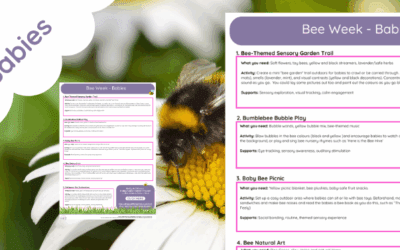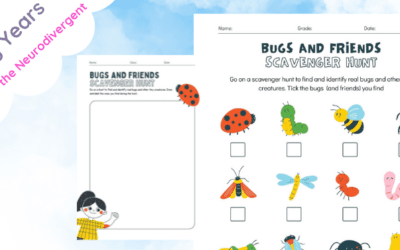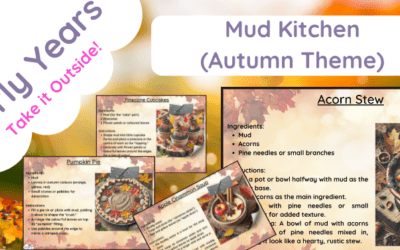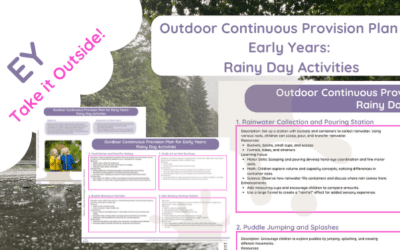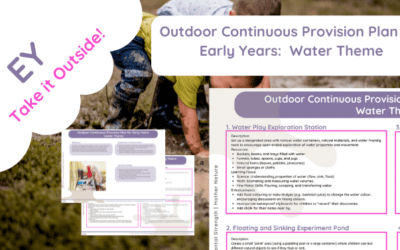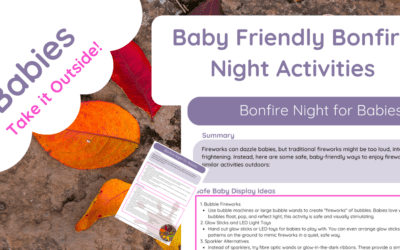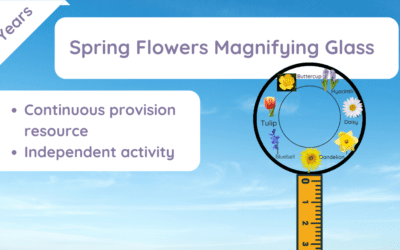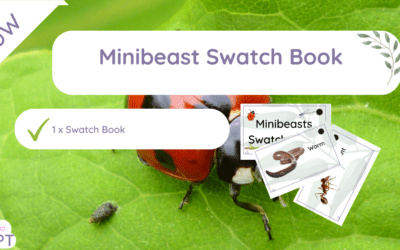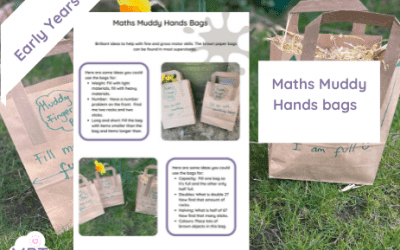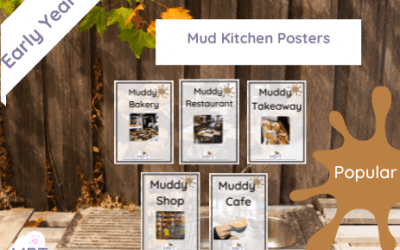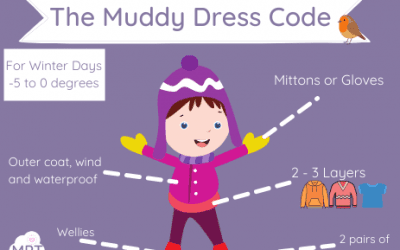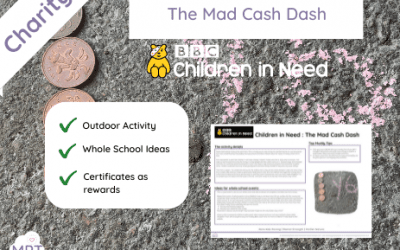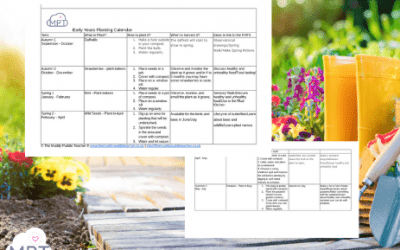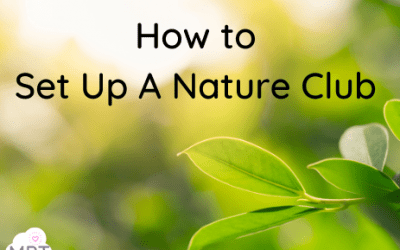Bee Day Lesson Plan Ideas for the Baby Room A buzzing bundle of baby-safe sensory fun for World Bee Day! Celebrate...
Bug Outdoor Learning Scavenger Sheet
Apr 4, 2025
Outdoor Learning Scavenger Hunt Tick SheetInspire curiosity. Explore the outdoors. Learn through play. Make outdoor...
Nature Craft Christmas – Fine Motor Task
Dec 17, 2024
Nature Craft Christmas Templates – Outdoor Festive Fun! Product Description: Bring the magic of Christmas and the...
24 Nature Crafts for Advent
Nov 14, 2024
24 Nature Crafts for Advent: A Journey of Creativity and Connection Celebrate the season with "24 Nature Crafts for...
Mud Kitchen Recipe (Autumn Theme)
Nov 12, 2024
Product Description: Mud Kitchen Recipe Kit – Autumn Theme Ignite your child's imagination and connection with nature...
Outdoor Continuous Provision Plan for Early Years: Rainy Day Activities
Nov 8, 2024
Product Description: Outdoor Continuous Provision Plan for Early Years – Rainy Day Activities Turn rainy days into...
Outdoor Continuous Provision Plan for Early Years: Water Theme
Nov 8, 2024
Product Description: Outdoor Continuous Provision Plan for Early Years: Water Theme (MPT Approach) Bring the wonder of...
Baby Safe Ideas for Bonfire Night
Nov 4, 2024
Baby-Safe Ideas for Bonfire Night: A Perfect Guide for Parents Keep your little one safe and cosy while celebrating...
Spring Flowers Magnifying Glass
Apr 29, 2024
What does this resource include? 1 x Magnifying Glass How can I use this resource? Use Spring Flowers Magnifying...
Bee Swatch Book
Jun 20, 2023
What does the Bee Swatch Book include? Instruction into how to use your muddy frame 1 x Outdoor Art Frame How can I...
Minibeast Swatch Book
Jun 20, 2023
What does this resource include? 1 x Swatch Book How can I use this resource? Hang up in your outdoor area and let...
Muddy Hands Bags (Maths)
Mar 28, 2022
Time to get those little hands muddy with these innovative ideas for great fine and gross motor practice.
Muddy Kitchen (Themed Posters)
Mar 18, 2022
Try some of our resources for Free. Sign up to our free outdoor learning membership here.
What children should wear in winter
Dec 1, 2021
As the Norweigian's say - "There's no such thing as bad weather, only bad clothes" Going outside in all weathers...
Children In Need : The Mad Cash Dash
Nov 17, 2021
Children In Need : The Mad Cash Dash This is a great event to also do as a whole school and add an element of...
Farm Park Resource (Footprint Spotter Sheet)
Apr 25, 2021
Going on a Farm Park Trip? Use Farm Park Resource (Footprint Spotter Sheet) to get your class outside, in the mud and...
Early Years Planting Calendar
Apr 19, 2021
Use the Early Years PLanting calendar to get a fun and organised planner to help you plant various plants if you are...
Set Up a Nature Club
Apr 19, 2021
Always wanted to set up an afterschool nature club? Well, this pack will help you! It gives you all the tips you need,...
New In
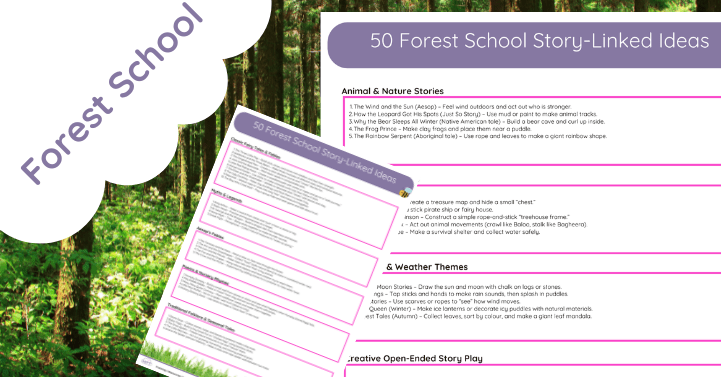
Forest School Story-Linked Lesson Ideas
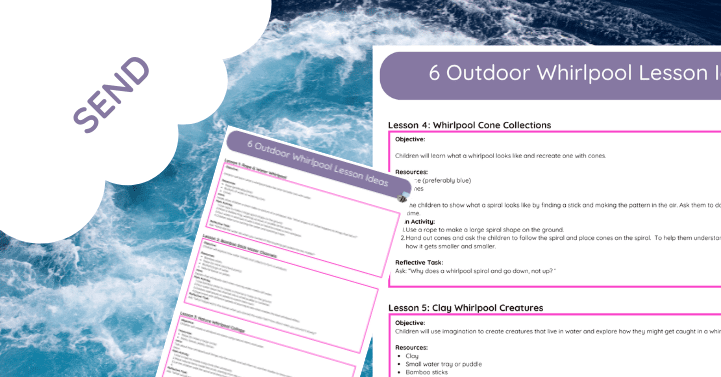
Whirlpool Lesson Ideas – SEND Pack
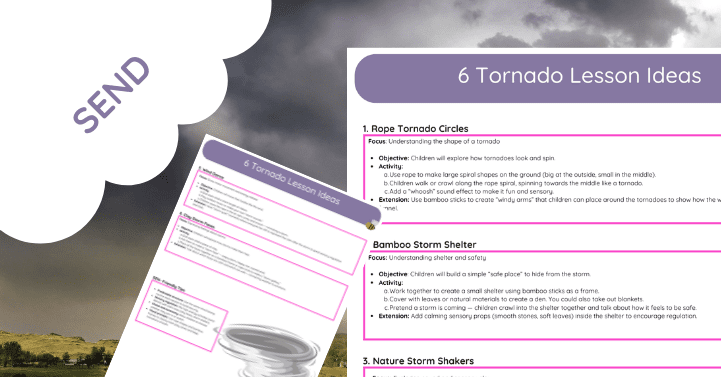
Tornado Lesson Pack for SEND
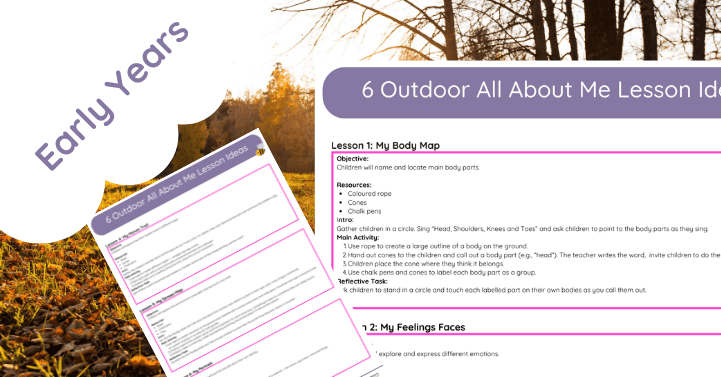
All About Me Lesson Ideas
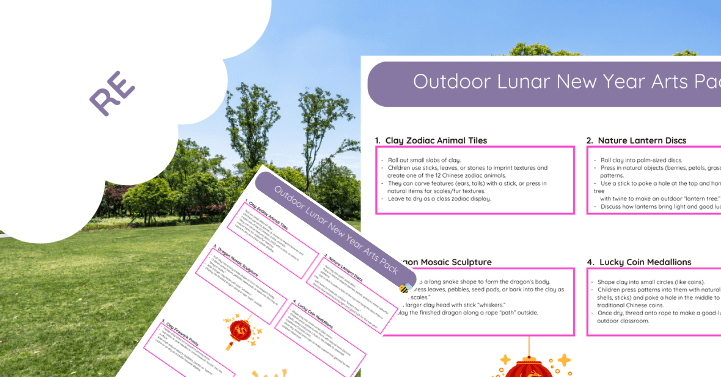
Lunar New Year Outdoor Arts Pack
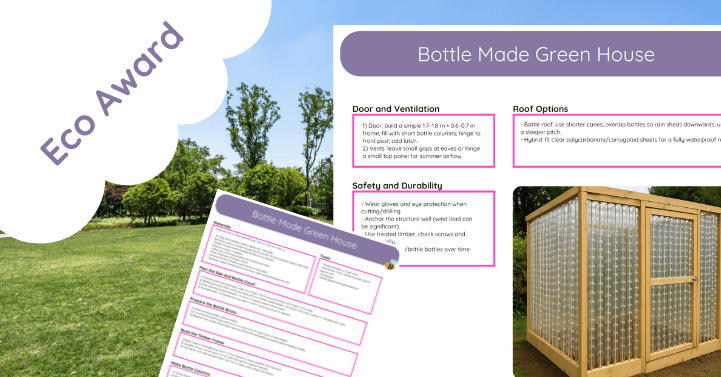
Bottle Greenhouse Instructions
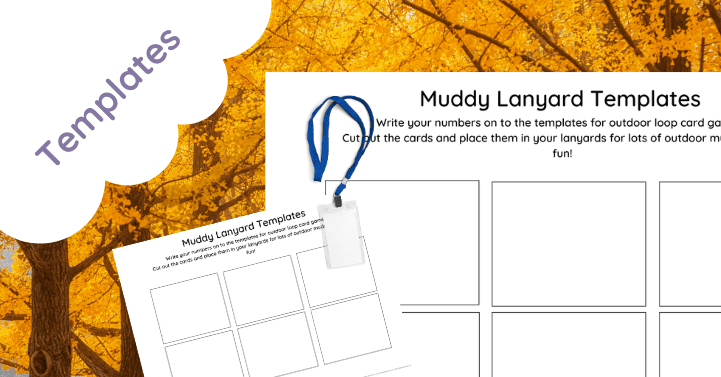
Blank Outdoor Lanyard Template
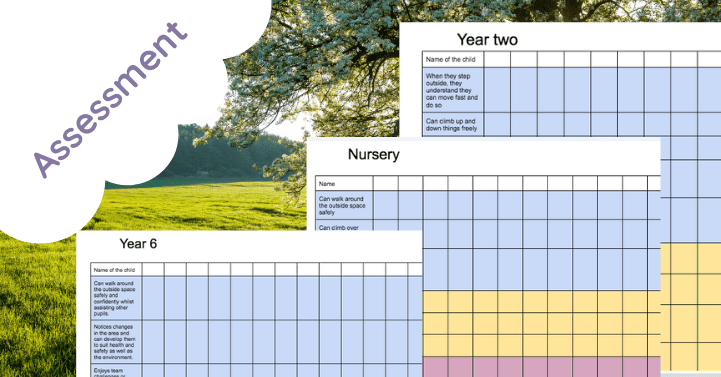
Outdoor Learning Assessment Grid

Nelson Mandela KS1 (Outdoor Lesson Ideas)



